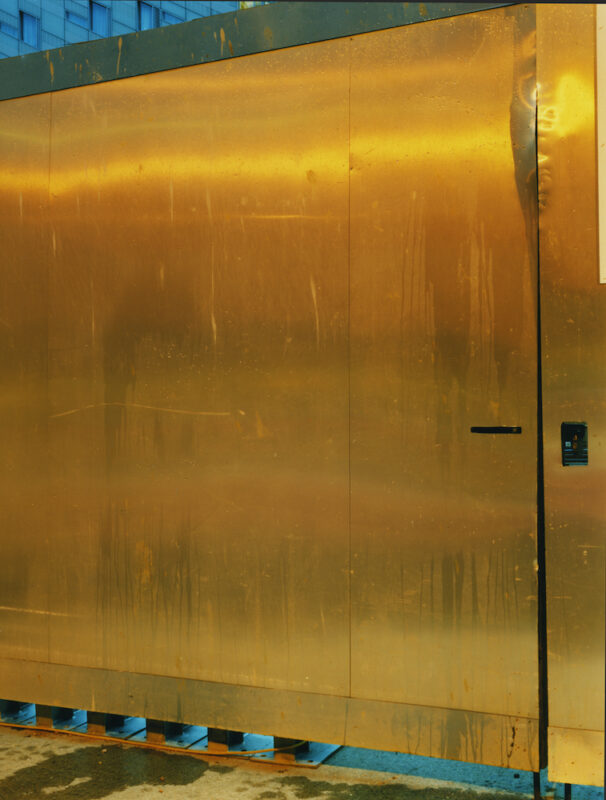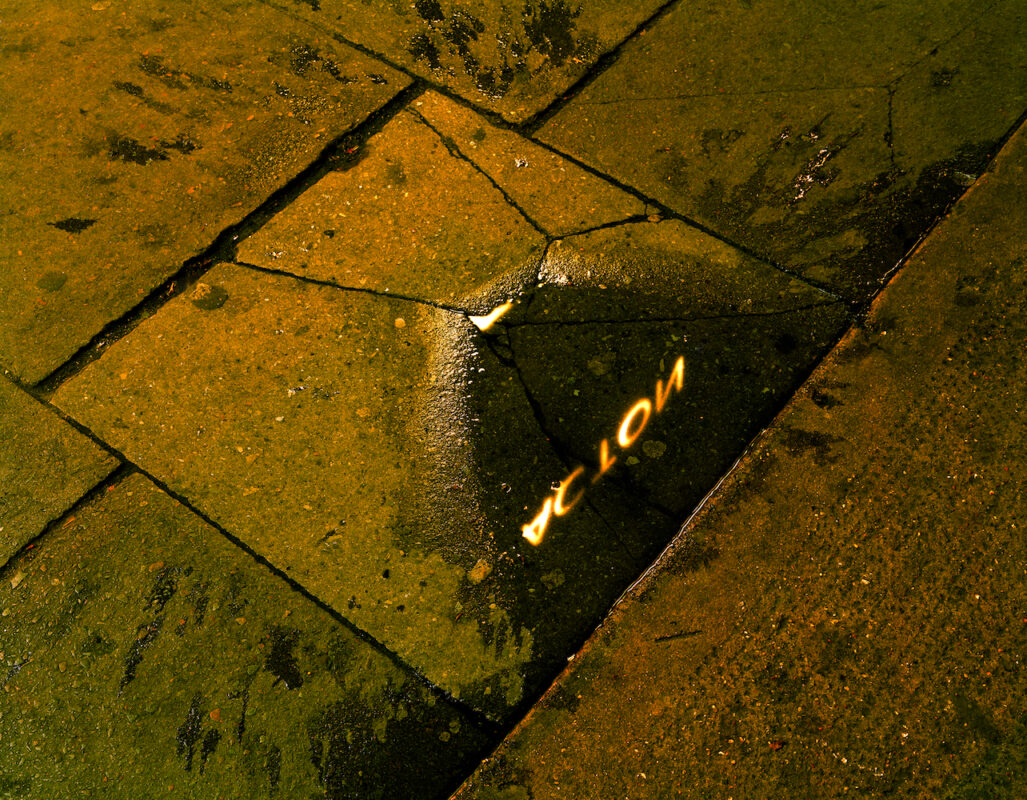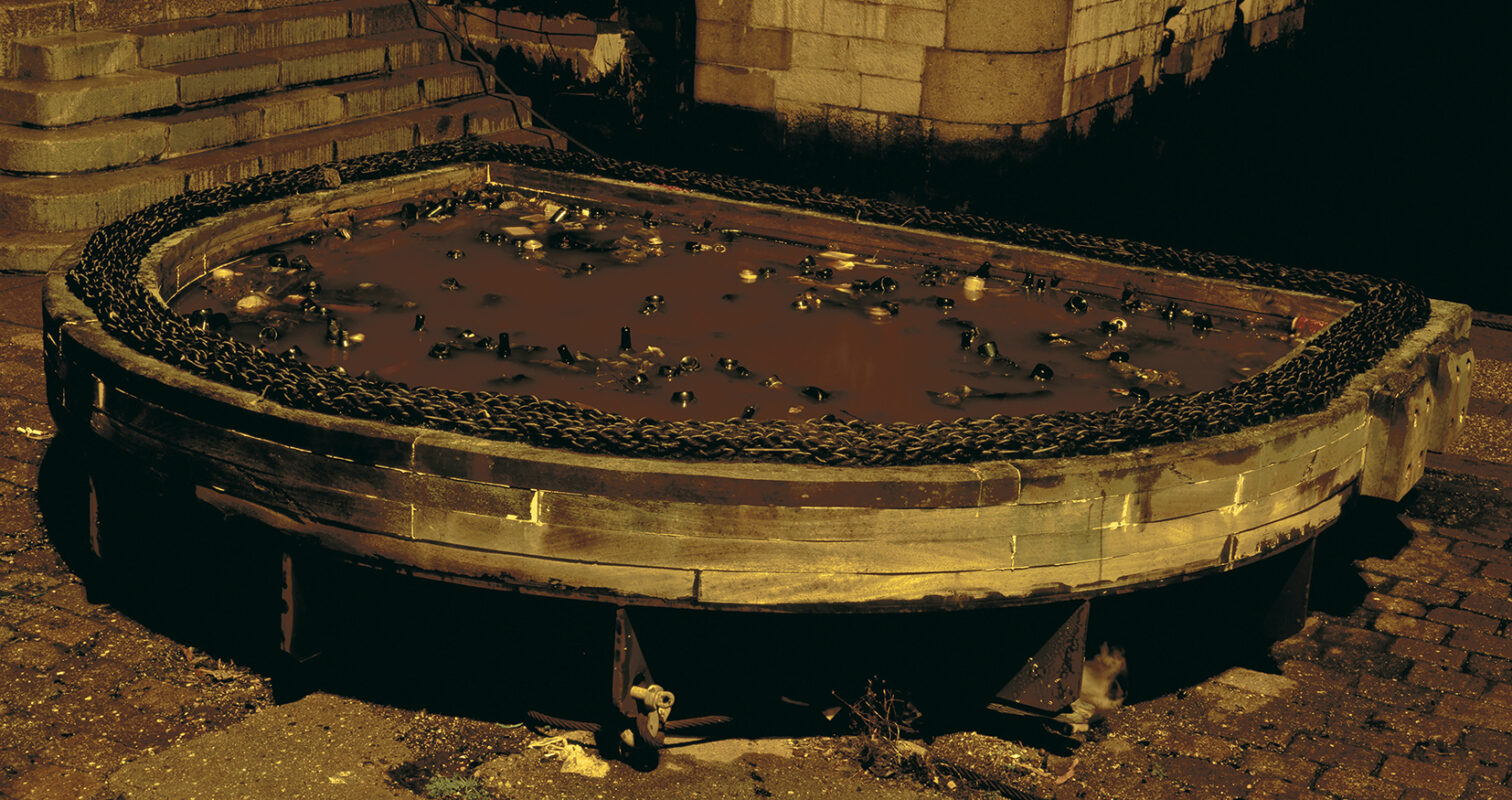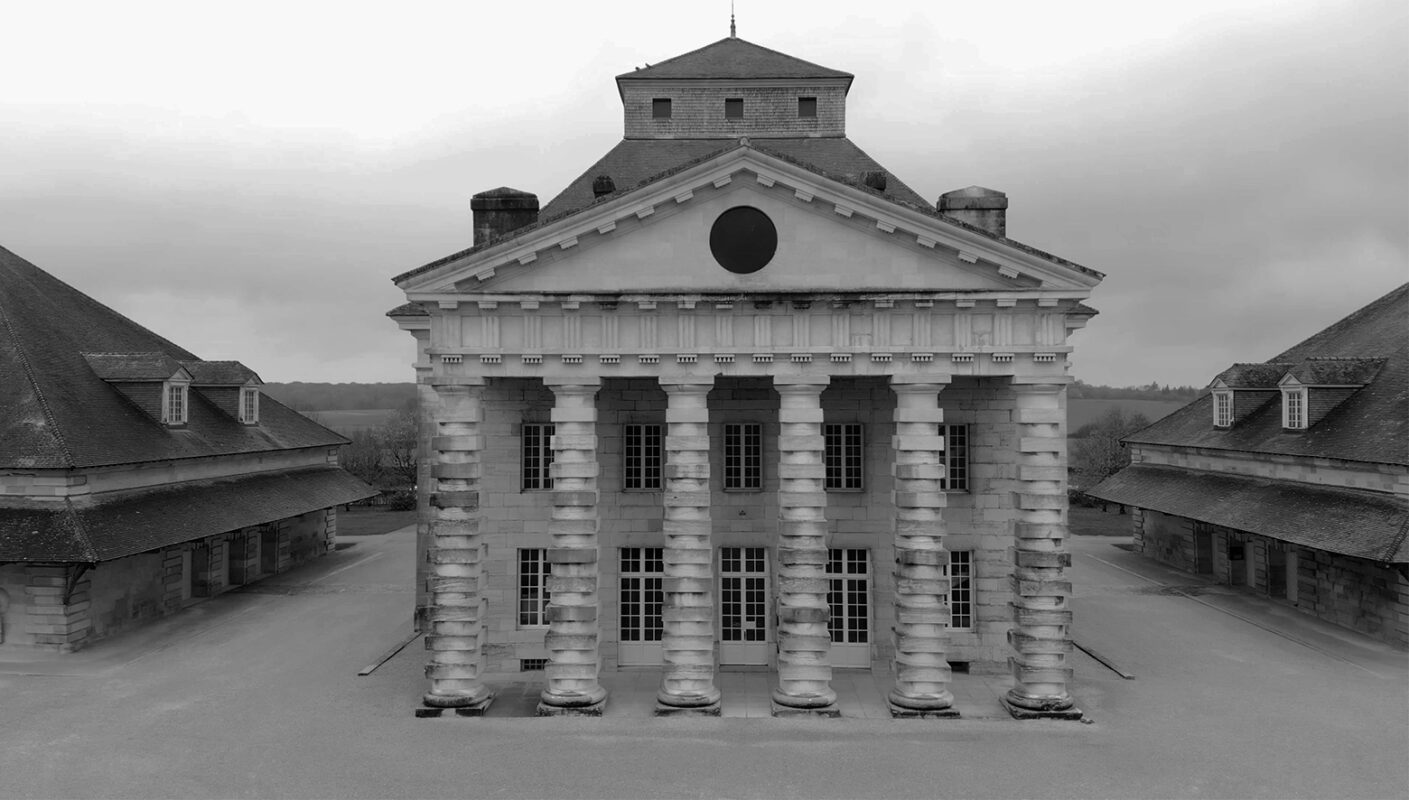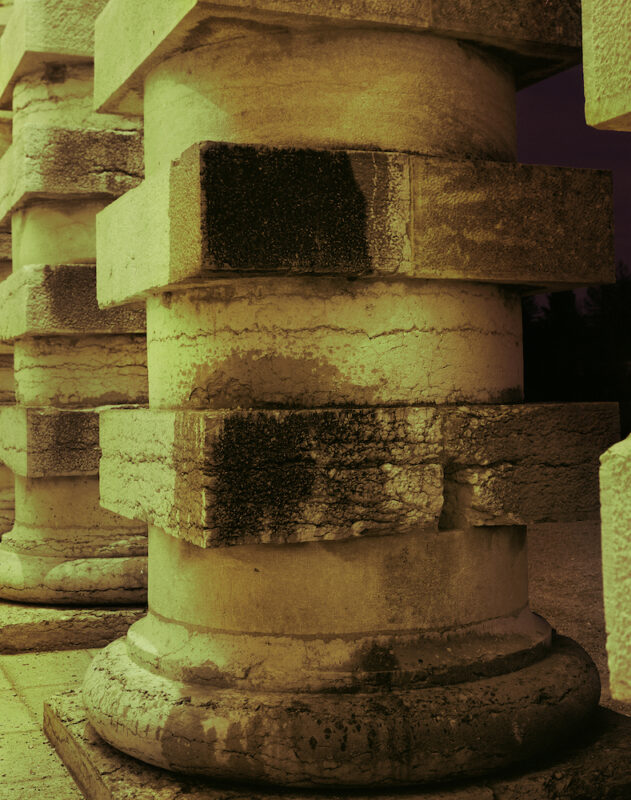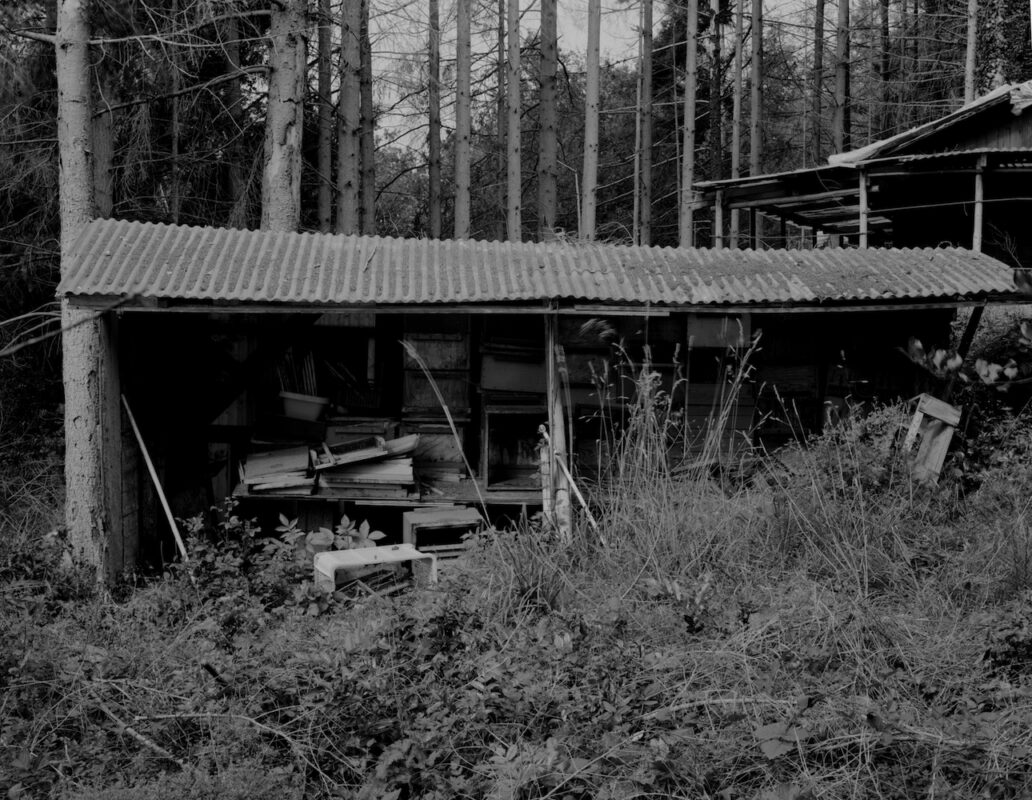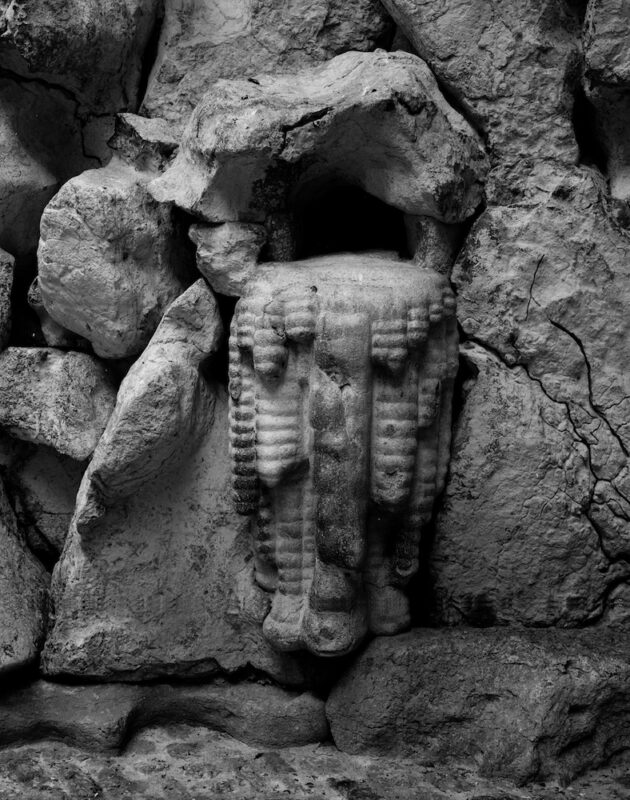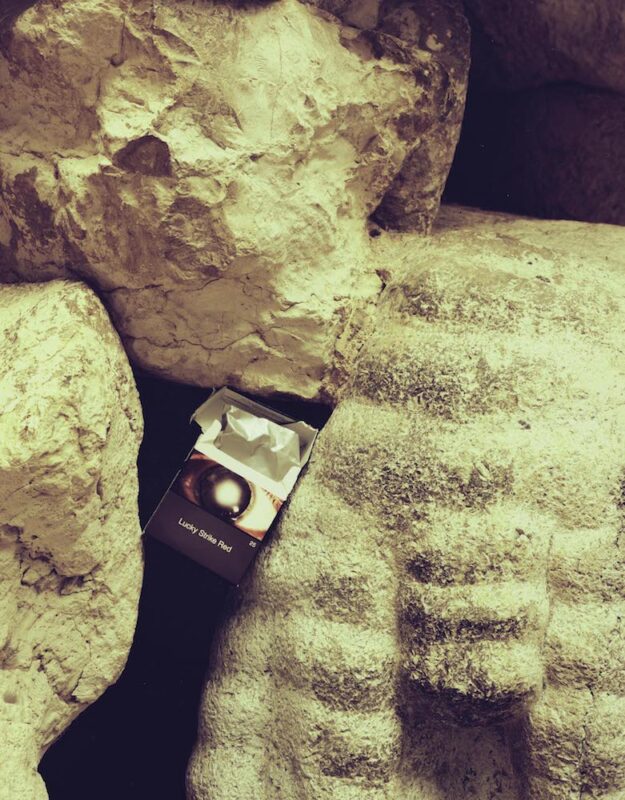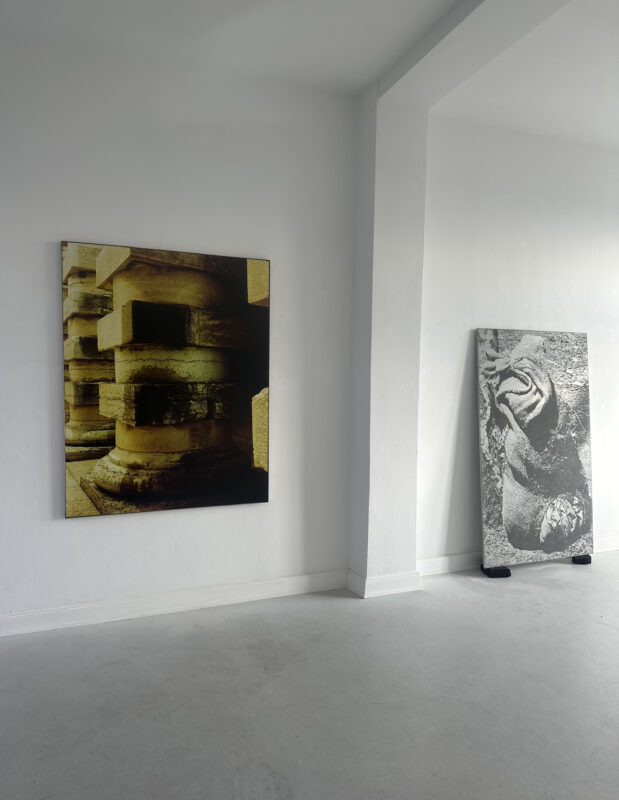Rut Blees Luxemburg
The Essence of Architecture
Interview by Michael Grieve
Rut Blees Luxemburg’s exhibition at Hamburg Werkstatt Fotografie, Germany, brings together large-scale photographic work concerning the representation of the city and the phenomenon of the urban. Here the artist discusses the selection and configuration of images in the exhibition, foregrounding liquid elements in the photographs that refer less to bodily failure and human fallibility than that which is unruly and essentially turbulent, thereby threatening the established dry and dusty order of power and control, she explains to Michael Grieve.
Michael Grieve | Interview | 2 Apr 2024
Michael Grieve: The Essence of Architecture is the curious title of your exhibition. Why did you choose this title? Indeed, is it possible that architecture can possess an intrinsic value or does it need a representation to convey this quality?
Rut Blees Luxemburg: The title of the exhibition comes from a short text by the philosopher Alexander García Düttmann, who wrote in response to my photographs on the work of the architect Nicolas Ledoux: ‘The essence of architecture is the sphincter.’ The philosopher gives a provocative meaning to the term ‘essence’. Yet it is not disagreeable, and alerts us to the body in relation to architecture, how we construct space to present and be private. If the camera becomes receptive, an un-burdened eye even, it might be able to capture an allusion of that essence. The eye, revered by Claude Nicolas Ledoux, became the focus of his architectural thinking and design, the eye as the organ of control and surveillance, but equally the eye as the organ of visual pleasure and delight. Ledoux presaged photography and its hold on our visual imaginary. In these photographic works and configurations in the exhibition, I wanted to emphasise the essentials: the sewer, the spills, the leaks, the ground.
MG: What exactly do you mean by “the essentials”? Are these leaks, spills, the sewer and the ground representative of some kind of anthropomorphic relation to the body? In this doomed utopian vision, in the Foucauldian sense, are we not always subject to return to the fallibility and limitations of our very human condition: the body that leaks, decays and ultimately fails us?
RBL: If we look at a work like The Font, we see a large basin with an obscure function in the harbour of Le Havre, in which discarded wine bottles, empty beer flasks and various other remnants of what looks like the accumulated aftermath of a continuous party swim. This “primordial soup” can be read as a hellish vision of disorderly nocturnal excess or it can serve as a tableau that recalls the joys of commingling, night-time debaucheries and carnivalesque, Brueghelian pleasures. The emphasis on the liquid elements in the photographs does not refer to bodily failure and human fallibility but is a sideways turn to that which is unruly and essentially turbulent, thereby threatening the established dry and dusty order of power and control.
MG: In your artistic practice, from very early on during the 1990s, you have been preoccupied with photographing the urban terrain at night. As a painter may use a particular palette of colours to convey a particular scene, you have used the given artificial light of the city, emphasing the peculiarity of this light and how it registers on film. And in your later work, there seems to be a sense in which your photographs are not recording the surface, but actually extracting something visceral from it. Although the opposite of extraction, this reminds me of Vladimir Nabokov when he says in the book, Transparent Things (1972), that when you observe an object long enough, you begin to sink into it. Can you explain your choice and fascination with the light of the urban terrain?
RBL: Some of my 90s work has an excessive palette, particularly intense greens and lurid yellows. These colours were exciting and wrong, certainly not calibrated, an hallucinatory offering into an experience of the city. Long exposures during the night with the 5×4 camera stretched and distorted the diapositive films colour capabilities while providing depth of field and accuracy of detail. The specific London sodium lighting of the time added a warm glow. The notion of sinking or falling into appears in many of the works of that time. From the Vertiginous Exhilaration (1995) from the top of the East End high-rise to the liquid entry points, be they reflective puddles, or the river, all inviting an immersion, a letting-go and falling into. My interest in the city was two-fold: to visually express what feeling at home in the public sphere is for me, or, in other words, how to dwell on a site, and to challenge the representation of the urban as a foreboding, dangerous, impoverished place. The urban light at night sets the scene, and it is immediately clear that we are finding ourselves in a constructed space, a human-made fiction, hence, a space that can also be de-constructed or re-imagined.
MG: You gave me a copy of a recently published book with a yellowish green cover, entitled Pissing Women (Climax Books, 2023) by the English artist, Sophy Rickett. I remember this work from the 90s when it was made and published in Creative Camera. It features three female artists as the performers, or should I say, activists, engaged in the act of pissing in the “male” stance of standing up, set within the context of the City of London, the financial “square mile”. It is a wonderfully provocative and satirical performance, featuring Sophy Rickett and yourself. Although Sophy Rickett is the author of the work, it was obviously a collaborative process and given the urban terrain, fits well with your own urban aesthetic concerns. Can you elaborate on this work and your own experiences of it at that time?
RBL: I got to know Sophy when we studied together on a BA Photography at LCP in the early 90s. We bonded and have bounced off each other, stimulating ideas, photo-theoretical arguments and various side-hustles ever since. Not long ago, we conceptualised Hi-Noon together, an innovative proto-type to support photographic artists. Back in the 90s, in addition to being students, we had various part-time jobs as temps in the city to fund our London lives. The experience of being present in the city, the financial dynamo of the UK, during the time of the yuppies, de-regulation and the occasional bomb from the Northern Ireland conflict, was certainly formative. I developed a series of works titled Chance Encounters which saw Sophy and I being present in the public sphere of the city, after dark, cos-playing so to speak, as city execs and engaging with strangers we met. These works asserted our right to be confidently present in the city, a playful pretence inserted into the hub of power. Parallel, Sophy developed the Pissing Women series, which emphasised our presence in a bodily way, marking the urban territory with our urine, a masculine technique we learned to perfect. Photography was the perfect conduit to capture these interferences and actions.
MG: The uncanny aspect of your photography is made apparent by the seeming lack of arbitrary decisions of the visual fragments you decide to frame, accentuated by your relatively limited productive output. And yet conversely it appears that you have a knowingness that what the photograph captures far exceeds the intention, therefore what you photograph allows unconscious meanings and associations to transpire.
RBL: Limited productive output?! I might make under 10 photographic works a year, but those are in the context of all my other artistic projects such as public art works, art books, curating as well as the teaching and researching. All of those creative endeavours nourish and enrich the photographic works, which can be seen as a distillation. A high-percentage spirit, that contains those unconscious meanings and stimulating associations you refer to. I aim for my photographic works to be condensed but expressive, with a hint of the flamboyant.
MG: The Essence of Architecture features a faux peruke, reminiscent of powdered wigs worn by men during the 18th century. Of course, this archaic object is there to evoke the essence of Ledoux, who designed and built the Saline Royale between 1775–78. A photograph of a common metal watering can, illuminated in sodium light, situated in what looks like a communal garden of a council estate in London, is adorned with the title, Latent Babylon. Humour is a major component of your work, with elaborate, satirical and absurd titles to each individual print carefully positioned often as textual destabilisers to the images, and sometimes vice versa. In some manner, it feels that your work is performative, theatrical even.
RBL: The wig Libertine is woven by the artist Jasmine Padjak from fresh yucca fibres. I was attracted by the verdant-green of the wig, an organic fragment of historical representation. I asked the artist if I could host this work in my exhibition to be the absent protagonist, the revolutionary architect, who might connect all the elements. The titles to the works can be a detour via the non-scenic route, or a literary denouement to challenge a purely visual response to the image, a device to keep the image unfixed and open for myriad readings and interpretations. The intrinsic irony of the world is there for the photographer to capture and stage. ♦
All images courtesy the artist and Hamburg Werkstatt Fotografie © Rut Blees Luxemburg
The Essence of Architecture runs at Hamburg Werkstatt Fotografie until 11 April 2024.
—
Rut Blees Luxemburg is an artist who explores the city and the phenomenon of the luminous. Her solo exhibitions include Phantom (Tate Liverpool, 2003) and London Dust (Museum of London, 2015), and her photographs have been shown in elles @ centrepompidou, Paris. Her work has been the subject of the opera Liebeslied/My Suicides, and her large-scale public work Silver Forest (2016) is installed as a permanent part of the façade of Westminster City Hall, London. Blees Luxemburg is also a Reader in urban aesthetics at the Royal College of Art, London, where she teaches on the MA Photography and Co-Leads the Spatial Value research catalyst. She created the album cover for Original Pirate Material (2002) by The Streets. She is a Director of FILET, London, and Co-Founder of HI-NOON. Her publications include London – A Modern Project (1997), Commonsensual (2009) and The Lesson of the Vine (2019).
Michael Grieve is a photographer, Director of ArtFotoMode, Hamburg Werkstatt Fotografie (HWF) and lecturer at Ostkreuzschule in Berlin. In 1997 he graduated from the MA Photographic Studies from the University of Westminster and then proceeded to work as a photojournalist and portrait photographer for publications internationally. He was Deputy Editor of 1000 Words and a writer for the British Journal of Photography. Since 2011 he has been Senior Lecturer at Nottingham Trent University, Nottingham, Akademia Fotografie Warsaw and the University of Art and Design, Berlin, and currently teaches at Ostkreuzschule für Fotografie, Berlin. He is currently working on Procession, a project documenting the peripheral space between Athens and Elifsina, Greece.
Images:
1-Rut Blees Luxemburg, Icarus Project, 2016.
2-Rut Blees Luxemburg, London Dust, 2013.
3-Rut Blees Luxemburg, Piccadilly’s Peccadilloes, 2007.
4-Rut Blees Luxemburg, The Font, 2008.
5-Rut Blees Luxemburg, Factory Utopia, 2021.
6-Rut Blees Luxemburg, Saline Dream, 2019.
7-Rut Blees Luxemburg, Die Hütte, 2023.
8-Rut Blees Luxemburg, The Dark Intestine of Nicolas Ledoux, 2019.
9-Rut Blees Luxemburg, The Security Guard, 2019.
10-Installation view of Rut Blees Luxemburg: The Essence of Architecture at Hamburg Werkstatt Fotografie.

